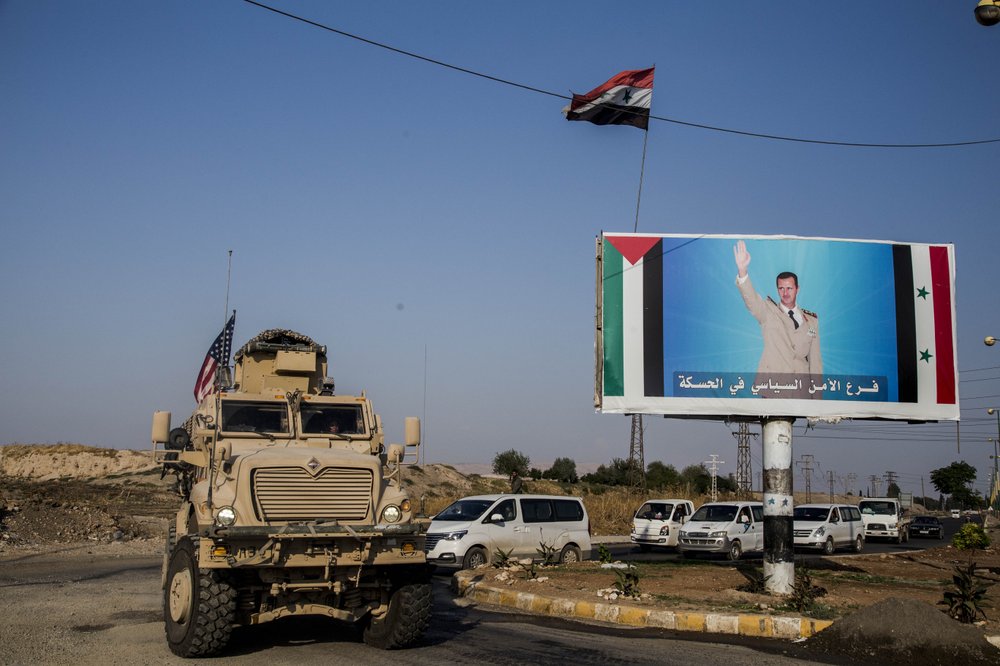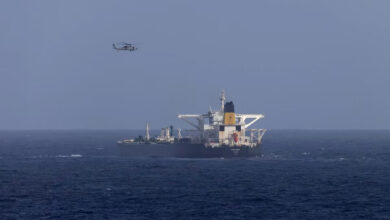
WASHINGTON (AP) — The Pentagon is considering sending several thousand additional troops to the Middle East to help deter Iranian aggression, amid reports of escalating violence in Iran and continued meddling by Tehran in Iraq, Syria and other parts of the region.
John Rood, defense undersecretary for policy, told senators Thursday that Defense Secretary Mark Esper “intends to make changes” to the number of troops deployed in the region. Other officials said options under consideration could send between 5,000 and 7,000 troops to the Middle East, but they all stressed that there have been no final decisions yet. The officials spoke on condition of anonymity to discuss internal deliberations.
The troop deliberations follow several decisions since spring to beef up the U.S. presence in the Middle East because of a series of maritime attacks and bombings in Saudi Arabia that the U.S. and others have blamed on Iran.
President Donald Trump has approved those increases, even though he also routinely insists that he is pulling U.S. troops out of the Middle East and withdrawing from what he calls “endless wars” against extremists. In October, Trump told his supporters that despite the sacrificing of U.S. lives in Iraq and other parts of the Middle East, the region is less safe and stable today. “The single greatest mistake our country made in its history,” he said, “was going into the quicksand of the Middle East.”
Asked about a possible troop increase, Trump told reporters Thursday: ”We’ll announce whether we will or not. Certainly there might be a threat. And if there is a threat, it will be met very strongly. But we will be announcing what we may be doing — may or may not be doing.”
Later Thursday, Trump’s national security adviser Robert O’Brien said the president was open to sending more troops to the Middle East. “If the troops are needed to deter Iran, we have the capacity to move them into the region — although I don’t think that’s happening right now,” O’Brien said on Fox News Channel’s “Special Report with Bret Baier.”
Military leaders have argued that the U.S. needs to increase its presence in the region in order to deter Iran from conducting more and broader attacks. Rood provided no details to back up why the additional troops are needed, but said the U.S. is concerned about recent intelligence indications suggesting an increased threat from Iran.
Rood was asked several times about reports that 14,000 more troops could be sent to the region. He repeatedly said Esper hasn’t made a decision yet, but didn’t specifically confirm or deny the number, so his answers appeared only to confuse senators.
Shortly after the hearing, Pentagon press secretary Alyssa Farah sent out a statement flatly denying the 14,000 number, saying Esper told the Senate committee chairman Thursday morning that “we are not considering sending 14,000 additional troops” to the region.
The troop discussions came as the Trump administration on Thursday accused Iranian security forces of killing more than 1,000 people in crackdowns against recent protests that have swept the country.
The estimated death toll is significantly higher than previously estimates from human rights groups and others, and the administration did not present documentary evidence to back up the claim. But Brian Hook, the U.S. special representative for Iran, told reporters the tally was based on a variety of reports coming out of Iran as well as intelligence analyses.
Speaking at the State Department, Hook said the U.S. had received and reviewed video of one specific incident of repression in the city of Mahshahr in which the Iranian Revolutionary Guards Corps had mowed down at least 100 protesters with machine-gun fire.
He said the video was one of tens of thousands of submissions the U.S. has gotten since Secretary of State Mike Pompeo appealed last month for Iranians to submit evidence of atrocities by the authorities in putting down the protests. In it, he said IRGC forces can be seen opening fire on protesters blocking a road and then surrounding those who fled to nearby marshlands where they were sprayed with bullets.
“In this one incident alone the regime murdered as many as 100 Iranians and possibly more,” Hook told reporters at the State Department. He did not display the video but said the actions it depicted corresponded to accounts of a brutal nationwide crackdown on the demonstrations, which started in response to gasoline price increases and rationing.
“We have seen reports of many hundreds more killed in and around Tehran,” he said. “And, as the truth is trickling out of Iran, it appears the regime could have murdered over 1,000 Iranian citizens since the protests began.” The dead include 13- and 14-year-old children, he said.
Speaking at the White House, Trump said Iran had “killed hundreds and hundreds of people in a very short period of time” and called for international pressure to be applied. “They are killing protesters. They turned off their internet system. People aren’t hearing what’s going on,” he told reporters while hosting a lunch for the ambassadors of U.N. Security Council members.
Alireza Miryousefi, a spokesman for Iran’s mission at the United Nations, again disputed any casualty figures from abroad as “purely speculative and highly inaccurate.” However, Iran’s government has so far refused to release any of its own.
“Mr. Hook has already said in public that he is very pleased with the suffering of ordinary Iranians, and that the U.S. has had arrangements in the past two years to maximize what occurred with the recent violence and damages in Iran,” Miryousefi told The Associated Press.
There was no known public video that supported Hooks’ allegation of a massacre in Mahshahr, although he said the State Department had gotten more than 32,000 responses to Pompeo’s appeal for videos and other evidence using the encrypted messaging app Telegram, which is popular in Iran.
Nor has there been any widely accepted claim matching Hook’s death toll of more than 1,000. Amnesty International believes at least 208 people have been killed and that the number could be higher. Iran has disputed that figure, but has refused to offer any nationwide statistics of the number of injuries, arrests or deaths from the unrest.
However, Hook’s numbers appear to match a figure put out late Wednesday by the Iranian exile group called the Mujahedeen-e-Khalq, which has paid Trump’s personal lawyer Rudy Giuliani for speeches at its events in the past.
The MeK alleged late Wednesday that more than 1,000 people had been killed. It published a list of 320 people it said it had identified so far as having been killed but did not provide proof.
Iran has alleged MeK supporters and those backing exiled Crown Prince Reza Pahlavi, the son of the country’s late shah, of being behind the unrest alongside foreign powers. It has not offered evidence to support those allegations.
In addition to the deaths, Hook said more than 7,000 protesters had been detained, with many sent to two prisons. Hook said that Pompeo had notified Congress on Thursday that both prisons would be hit with U.S. sanctions for gross human rights abuses. It was not immediately clear when those designations would occur.
Hook’s comments come as the U.S. steps up its “maximum pressure campaign” on Iran that it began after withdrawing from the landmark 2015 nuclear deal last year. That campaign has been highlighted by the imposition of increasingly tough sanctions and an increase in rhetoric critical of Tehran and its leadership.
As part of the pressure campaign, Hook announced that the U.S. is offering a reward of up to $15 million for information leading to the whereabouts of a top IRGC commander now believed to be supporting rebels in Yemen. He said Abdul Reza Shahalai was responsible for numerous attacks against U.S. forces in Iraq and had been behind a foiled plot to murder the Saudi ambassador to the United States in a Washington restaurant.
Reporting by Matthew Lee; Lolita C. Baldor, Robert Burns and Deb Riechmann in Washington and Jon Gambrell in Dubai, United Arab Emirates, contributed to this report
Image: U.S. military convoy drives the he town of Qamishli, north Syria, by a poster showing Syrain President Bashar Aassad Saturday, Oct. 26. 2019 (AP Photo/Baderkhan Ahmad)




